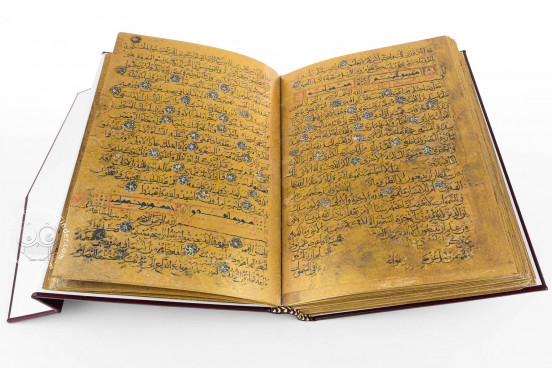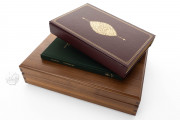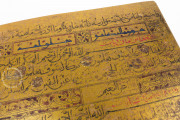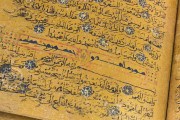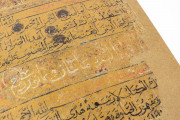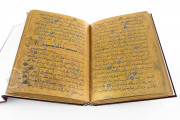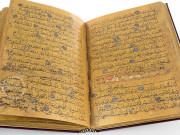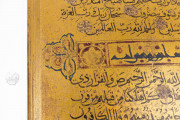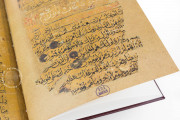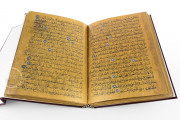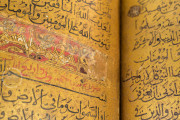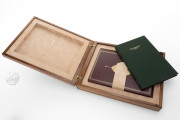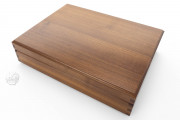The Golden Quran is a manuscript of the holy text of Islam produced in the eastern Islamic lands in the late twelfth or early thirteenth century. Every page is gilded, unlike any other known Koran. The surviving page of the two-page frontispiece, which includes text, is decorated in a deep blue, red, and gold geometric design composed of octagons, quatrefoils, circles, and stars. The text is organized under headpieces with writing and decoration in blue, red, black, and white with geometric and vegetal ornament, and silver rosettes mark the verses.
In 1967, the manuscript underwent extensive restoration over the course of a year at the Institute of Book and Manuscript Restoration of the Bavarian State Library, preserving this remarkable testament to medieval Islamic book arts for future generations.
Historical Context and Material Significance
In the history of Qur'anic manuscript production, colored writing materials were rarely employed. While the famous Blue Qur'an in Kufic script remains a notable exception—with individual folios appearing at auctions over centuries—and some manuscripts were dyed with saffron or crimson, this particular Qur'an stands as a unique artifact. Originating presumably from Iraq, Iran or Syria, this exceptional manuscript features black Naskhi script written on gold-coated paper, making it an extraordinary example of Islamic bookmaking.
Development of Naskhi Calligraphy
The Naskhi script was standardized as a precisely proportioned cursive script by the master calligrapher Ibn Muqla (d. 940) during the tenth century. This elegant script employs the alif—the first letter of the Arabic alphabet—as its fundamental unit of scale, determining the proportional dimensions of all other letters. Renowned calligraphers Ibn al-Bawwab (d. 1022) and Yakut Musta'simi (d. 1298) further refined this mathematical approach in their influential works, establishing lasting calligraphic traditions.
Decorative Elements and Illumination
The manuscript begins with a decorative frontispiece displaying an intricate geometric pattern composed of octagons, stars, quatrefoils, and script medallions. Sura headings appear framed in blue, white, and reddish-brown, executed in either Kufic or cursive script, and are embellished with floral motifs and arabesque patterns. Unfortunately, some ornamental work around the edges has been lost due to trimming for a later binding.
Textual Features and Organization
The basmala (the invocation "In the name of Allah, the Most Gracious, the Most Merciful") appears at the beginning of all suras except the ninth, typically occupying most or all of the first line. Each sura title is repeated above the elongated letter sin in the basmala, with verse numbers indicated in red ink. The text is fully vocalized (marked with diacritical points indicating vowels), and individual verses are separated by decorative rosettes.
Stylistic Attribution to the School of Ibn al-Bawwab
Several distinctive features place this Qur'an within the school of Ibn al-Bawwab: the unusual arrangement of the first page with two sura titles; the elongated letter sin in the basmala; the distribution of the basmala across an entire line; the characteristic color palette of white, brown, crimson red, and black ink that Ibn al-Bawwab introduced; the subtle leftward slant of vertical letters; and the dense yet remarkably clear calligraphic style.
We have 1 facsimile edition of the manuscript "Golden Koran": Goldkoran facsimile edition, published by Akademische Druck- u. Verlagsanstalt (ADEVA), 2011
Request Info / Price
